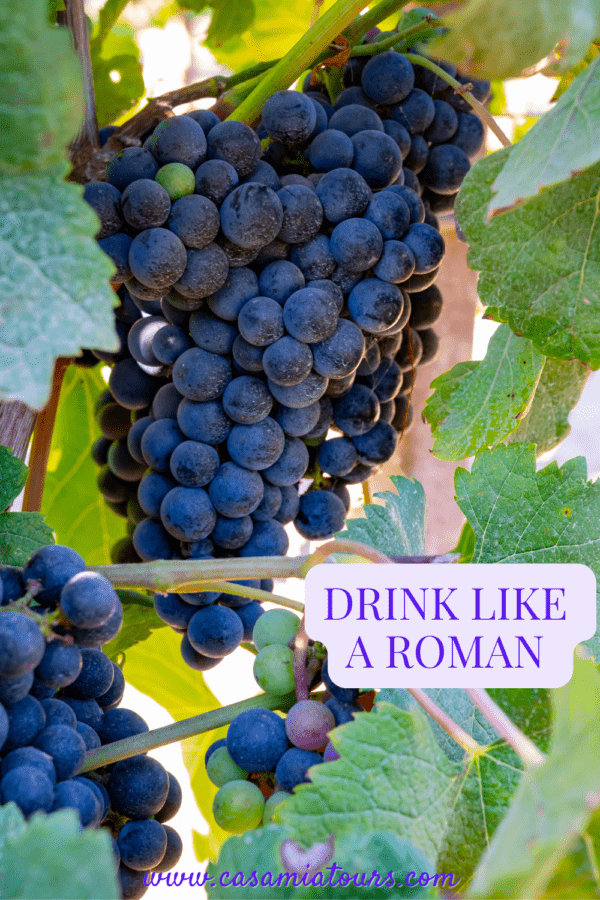
When sharing wine with friends and family I often ask them what Italian wine they like best. The most common reply is a red from Tuscany, most likely a “super Tuscan” (a term coined in the 80’s to describe a red blend from Tuscany which uses wine grapes that aren’t indigenous to Italy like Merlot, Cabernet Sauvignon and Syrah).

When I suggest a wine from Lazio people look dazed and confused never mind the eyebrow raising glares when I utter the red wine grape Cesanese. The region of Lazio remains a somewhat indefinable area often overshadowed by its neighbors (Campania, Tuscany and Umbria). Often visitors to Rome don’t always know that Lazio is the region that Rome calls home. Rome’s importance as the capital make it feel like an oasis in the desert, a landlocked island enclosed by the GRA, the highway which divides the city from rolling hills speckled with olive groves, orchards and vineyards. Only a short drive outside of the city brings one to the land of the antique grape variety Cesanese.

Take this confusion and add it to Lazio’s reputation for high volume production of cheap neutral tasting white wines and you have a region with a tainted image. Much of the wine that washed up on U.S. shores was white. Despite white wine accounting for the majority of wine production in Lazio, the dry and warm weather of Lazio combined with red volcanic soil found throughout much of the region are ideal for red wines. Thankfully some Lazio wine makers have turned the corner from quality over quantity and Lazio’s wine culture along with red wine production are improving.
Like Sangiovese is to Tuscany, Cesanese is to Lazio, arguably the most important and delicious red grape variety of the region. The best Cesanese wines come from vineyards around the towns Anagni, Piglio and Olevano Romano. No stranger to winemaking, Piglio’s winemaking history dates back to the 1st century BCE. Thought to be a favorite of Pope Innocent III and Bonifacius VIII, in the past sweet and sometimes fizzy Cesanese was the norm. Today they are typically dry and fruity with smooth tannins and blueberry, mulberry, violet and juniper aromas. Pairings include pasta alla amatriciana, coda alla vaccinara and abbacchio (lamb) stew.
Here are a few vineyards for wine lovers to visit in Lazio. The wineries were selected for the quality of their wine and to give wine drinkers a range of diverse vineyards from historic estates to small biodynamic wine producers to visit and enjoy.

Cantine Riccardi Reale
In 2010, Cantine Riccardi Reale was started in 2010 by Lorella Reale and Piero Riccardi on Piero’s grandparent’s land. Lorella is an Italian Federation of Sommeliers (F.I.S.) certified sommelier. Piero started his career as a director for RAI while studying organic and biodynamic farming practices for passion outside of the “office”. Cantine Riccardi Reale produces biodynamic 100% Cesanese wines planted on diverse soil types as well as white wines made with Malvasia Puntinata del Lazio and Riesling.

Casale della Ioria
Paolo Perinelli is the heart and soul of this historic estate found in the hilly area of Ciociaria. One hour drive south of Rome, Casale della Ioria is located in the heart of the Cesanese del Piglio D.O.C.G. wine making area. Perched at approximately 400 meters above sea level, their olive trees and vineyards are surrounded by forests. Try the Casale della Ioria, Cesanese del Piglio D.O.C.G.

Damiano Ciolli
Damiano Ciolli is the young and passionate wine maker at the helm of the vineyard. A fifth generation wine maker, he began bottling his wine in 2001 when he took over the vineyards from his Dad Costantino. He is often noted as the first wine producer in Olevano Romano to move toward quality production over quantity, setting him apart from the pack. All work in the vineyard is done manually resulting in two 100% Cesanese wines, Silene and Cirsium. Enjoy Damiano Ciolli’s, Cesanese di Olevano Romano D.O.C. Silene for everyday drinking, it’s fresh and full of red cherry fruit flavors. Savor his Cesanese di Olevano Romano D.O.C. Cirsium with a leisurely Sunday lunch.

Migrante
Lorenzo Fanfarillo discovered his passion for vineyards and wine production in 2000. In 2003 he and Giulio Milana created Migrante to bring attention to Cesanese di Olevano Romano. Like Daminao Ciolli they took a bet on quality over quantity keeping yields low. Try Migrante, Cesanese di Olevano Romano D.O.C. Consilium and Migrante, Cesanese di Olevano Romano D.O.C, Sigillum.
Lazio wine producers have not only preserved ancient winemaking traditions but also embraced a sustainable and soulful approach, creating a legacy of wines that truly embody the spirit of the land.
Want to visit a vineyard or two with Casa Mia?









